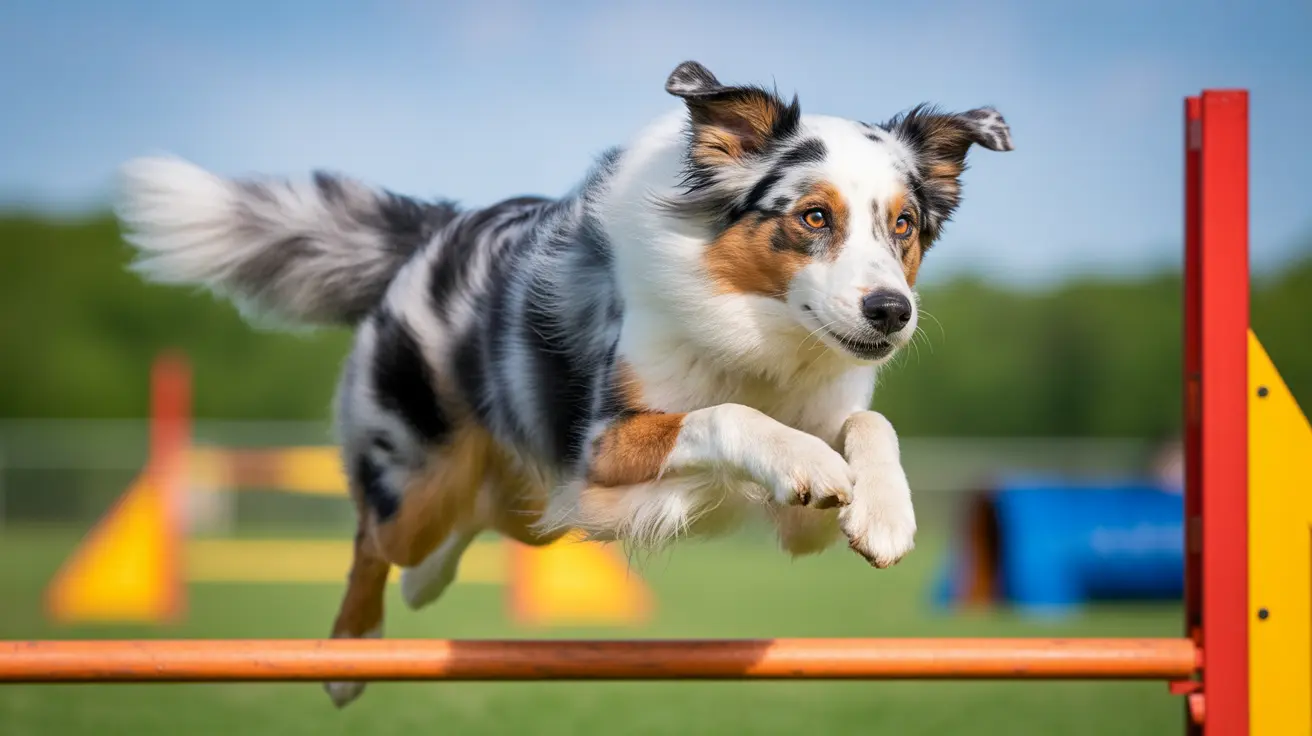Understanding HOD (Hypertrophic Osteodystrophy) in Dogs
Hypertrophic osteodystrophy (HOD) is a developmental bone disorder that can turn a puppy's playful days into a struggle with pain and discomfort. If you have a large or giant breed puppy, it's important to know what HOD is, how it presents, and what you can do if your dog is affected.
What Is HOD?
HOD stands for hypertrophic osteodystrophy, a disease that primarily strikes fast-growing large and giant breed puppies between 2 and 8 months old (though some medium-sized dogs may also be at risk). Males tend to be affected more often than females. Breeds like the Weimaraner, Great Dane, Irish Setter, Boxer, German Shepherd Dog, Saint Bernard, Labrador Retriever, Standard Poodle, Rottweiler, Doberman Pinscher, Irish Wolfhound, Kuvasz, Chesapeake Bay Retriever, Golden Retriever—and others—are particularly prone.
How Does HOD Affect Dogs?
The disease most commonly targets the metaphyses of long bones, especially the distal radius, ulna, and tibia. However, it doesn't stop there: ribs, jawbones, scapulae—even footpads—can be involved. The hallmark signs are:
- Painful swelling around joints (especially near the ends of long bones)
- Lameness, often affecting both sides
- Fever
- Lethargy and reluctance to move
- Loss of appetite
In severe cases—especially in breeds like the Weimaraner—puppies may refuse to stand or walk at all. Systemic symptoms can include depression, weakness, nasal or ocular discharge, diarrhea (sometimes bloody), inflamed vulva or vagina in females, thickened pads on their feet, coughing or even pneumonia. Occasionally you'll see swelling of the jaw with drooling.
The Disease Process: What's Happening Inside?
The underlying problem seems to be a disturbance in blood supply near the growth plates of bones (metaphyseal region). This disrupts normal bone formation. Radiographs often reveal necrosis (tissue death), inflammation and new—but irregular—bone growth.
The earliest radiographic sign is a radiolucent line parallel to the growth plate (sometimes called a "double physis"). As things progress you might see:
- Periosteal bone proliferation (new bone forming on outer surfaces)
- Swelling of soft tissues around affected regions
- Bilateral involvement (both sides/limbs)
What Causes HOD?
The exact cause remains elusive. Theories include:
- Genetics: Familial clustering suggests an inherited component in some breeds.
- Nutritional imbalances: Diets high in calcium or calories; excessive vitamin/mineral supplementation.
- Infections: Canine distemper virus has been implicated.
- Autoimmune reactions:
- Puppy vaccinations: Possible but unproven link.
A deficiency of vitamin C was once considered but has since been dismissed as a cause. Overfeeding hasn't been definitively linked either.
The Clinical Picture: What Does HOD Look Like?
Puppies may show anything from mild limping to severe systemic illness. Typical findings include swelling and warmth at metaphyseal regions (the ends of growing bones), pain when these areas are touched and sometimes visible joint swelling—which careful examination can distinguish from metaphyseal swelling itself.
If the disease damages growth plates badly enough (especially with repeated episodes), puppies can develop permanent limb deformities such as bowed legs or carpal valgus deformity. Rarely does this result in dwarfism or require surgery—but it's possible.
Diagnosing HOD in Dogs
Your veterinarian will rely on physical exam findings combined with radiographs showing characteristic changes: those "double physis" lines and new periosteal bone formation. Blood tests help rule out other diseases but usually don't show much change themselves.
- Differential diagnoses include panosteitis, septic arthritis, rickets, osteomyelitis and trauma among others.
Treatment Options for HOD
Treatment focuses on supportive care:
- Pain control: NSAIDs for mild/moderate cases; corticosteroids for severe/systemic cases (especially effective in Weimaraners).
- Nutritional support: Correct dietary imbalances; avoid excess supplements—particularly calcium and vitamins C/D/A.
- Sick puppies may need hospitalization:
- Pain management with opioids if needed
- IV fluids for dehydration/fever
- Nutritional support if not eating well
- Antibiotics if secondary infections develop (especially if immunosuppressed by steroids)
- Treat GI upset with antacids as needed
Your vet may recommend restricted exercise and physical therapy until recovery begins. Surgery is rarely required except for severe limb deformities that don't resolve after growth ends.
The Course of Disease: What Should You Expect?
Episodes are often self-limiting—lasting about 7–10 days—but relapses may occur until your puppy reaches skeletal maturity. Most recover fully without lasting effects; permanent changes are rare unless there's repeated or very severe involvement. Intractable cases may require tough decisions about quality of life—including euthanasia if suffering can't be controlled.
Prevention Strategies for Owners
- Avoid over-supplementing minerals/vitamins—especially calcium—in growing puppies.
- Select diets formulated specifically for large/giant breed puppies.
- Avoid excessive jumping/running on hard surfaces until growth plates close.
- Create safe environments that minimize falls or physical stress during rapid growth phases.
No prevention method is foolproof because the exact cause isn't known—but balanced nutrition makes a difference for many at-risk breeds.
A Final Word on HOD in Dogs
If your young dog develops sudden lameness with swollen joints or seems unusually lethargic during rapid growth stages—especially if they're one of the susceptible breeds—see your vet promptly. Early recognition and tailored supportive care give most puppies an excellent chance at full recovery from this challenging condition.





